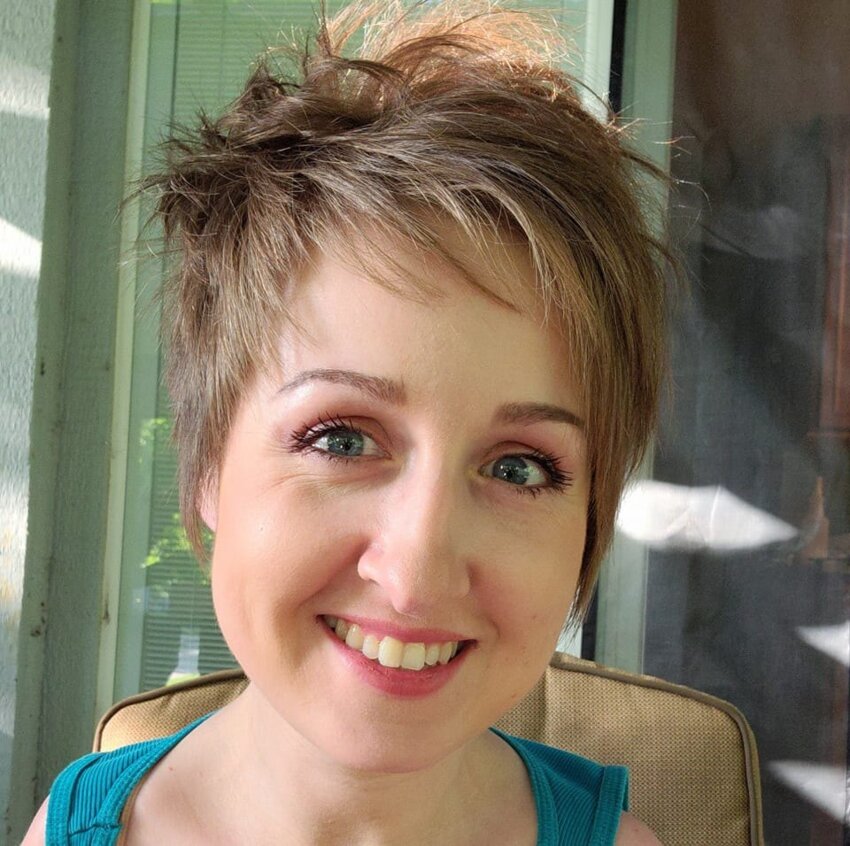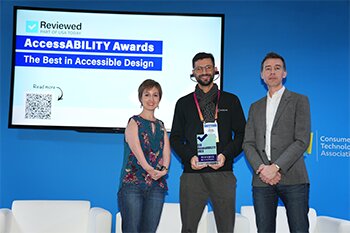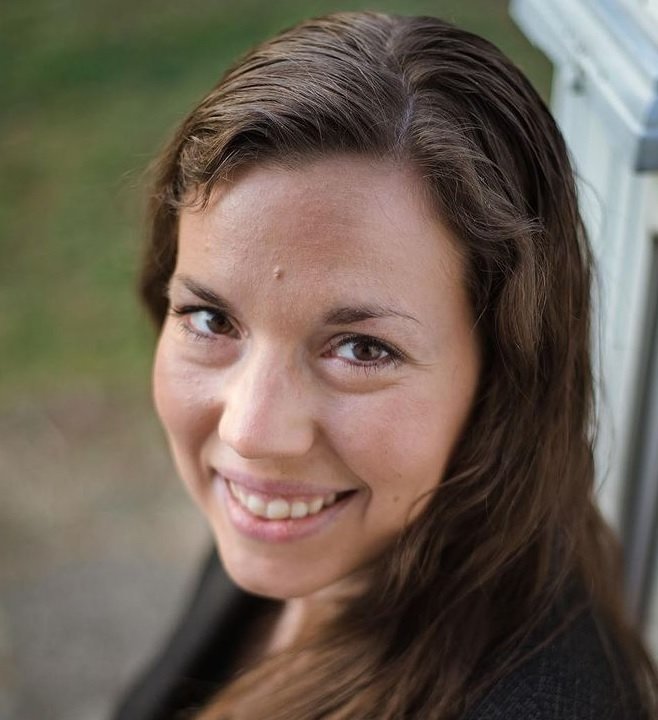A line of code may be all that is needed to open the door for readers with disabilities to access digital journalism.

Patrick Merlihan, who runs digital strategy for the Woolwich Observer in Elmira, Ontario, thought he was about to tackle a monumental task in a quest to make the website fully accessible for the 15,000-circulation newspaper in September 2021.
“I thought I was going to have a lot of challenges to make our site accessible, and then it was, like, 10 minutes,” he said.
Merlihan, who served as a ward councilor for about 13,000 people in his community, became more aware of accessibility issues in his political role. He said updating older infrastructure for accessibility is a project that requires budgeting years in advance.
“I think people make assumptions about your audience and think, ‘Oh, they must be just like me,’” he said. “When you meet people face to face that have these difficulties, you put a face to these issues, and you say, ‘Oh, it really wouldn’t be that hard to add and install different features to make life a little bit better.’ Then you also learn that when you do that, it actually helps everyone.”
Merlihan said he never would have conceived of all the options to make content accessible. He purchased a plug-in that modifies their website for various disabilities and challenges, such as dyslexia, ADHD, vision impairments and more.
He secured a lifetime deal through a startup company at the time — adakits.com.
“As newspapers, we should make sure that everyone in our community can access the news and be a part of the conversation,” he said.
Opening the door to conversation

Sarah Kovac, the accessibility editor for USA TODAY Reviewed, said the first step toward accessibility in journalism is creating an open door for dialogue.
“The biggest thing that I care so much about in journalism that has to do with people with disabilities is it needs not just to represent people with disabilities, but they need to be involved,” she said. “You don’t want everyone reading your publication to have to advocate for themselves, but you want initiatives that include those people to be by them because they know what they need better than anybody else. Folks with disabilities are so used to everyone around us telling us what they think we need, so it’s important not to skip that step.”
She began writing for the product review publication in 2018, covering smart homes and later took the lead in building the dedicated accessibility category in 2021.
As she stepped into her role, she started a Slack channel and invited anyone with a disability or who cares for someone with a disability to send her a confidential message about a product that helped them.
“It would probably surprise folks how many people have invisible disabilities or are dealing with something at home that would apply to that situation, and they’re ready to talk. They’re ready to tell their stories,” Kovac said.
The reviews are written by people with disabilities or caregivers who have used the products. Typically, writers pitch Kovac a product review because it helps them in their daily life.
“In so many workplaces, a disability is a drawback, and I love being able to have writers on board know that the fact they have these disabilities and struggles actually makes them a huge asset to us and to our readers,” she said.

Reviewed presented the inaugural AccessABILITY Awards in January as part of the 2023 Consumer Electronics Show's (CES) official programming.
Kovac noted that even conversations about accessibility can often leave many people out. She is diagnosed with arthrogryposis, which causes frozen joints and muscle weakness. She cannot use her hands, so she uses her feet in daily tasks like typing and caring for her children. She aims to bring more people on board to review products that help people with rare conditions.
“Accessibility usually means certain disabilities to people, and that’s because of how things have been branded. That’s the way certain accessibility issues have been put in place. But there are so many people that don’t fit into that specific category of accessibility,” she said.
Kovac said Reviewed also places a focus on aging in their accessibility category.
“Being perfectly able-bodied is, at best, a temporary state of being. We all experience disability of some kind at some point, and I love that we can harness the experience and expertise of people who’ve been living it for a long time to help the people that are just being introduced to what it’s like to live with limitations,” she said.
She said she has “the coolest job” because of the direct impact of the work.
“There aren’t a lot of jobs where you feel like you’re making a difference for somebody, and a good accessibility product can be the difference between living independently or relying on somebody else to take care of you,” she said.
A bridge for journalists and engineers

The Washington Post's new accessibility editor, Holden Foreman, stepped into the new position in January after getting his start with the publication in 2020 as an intern for the site engineering team.
He began learning about accessibility through his internship and started an informal group with others involved with accessibility issues at the publication.
Foreman, who does not identify as disabled, said feedback is critical to accessibility and wants to be a resource for others.
“Relaying those actual concerns with readers and users, I think, is the most effective thing you can often do because if they see someone’s actual words like, ‘Hey, I’m having this issue,’ or, ‘Hey, I literally cannot access your content,’ I think that resonates,” he said.
Foreman said his role allows him to bridge the gap between journalists, who want everyone to be able to access their content, and engineers, who can work toward that goal.
He said it is also imperative that accessibility is publicized once it is implemented. If a reader with a disability tries to access a website and cannot, they are not likely to repeatedly check back to see if something changed.
“We know that we will always have limited resources, and we need to really open the door to real feedback from users and then engage with that feedback and address the myriad of issues that come up that are not limited to our preconceived notions,” he said. “These are things that are not thought of by many people in the journalism world and are often very easy to implement solutions for.”
The Washington Post launched its open-source design system in May and hired a reporter dedicated to the disability beat in August 2022 — Amanda Morris.
Celebrating accessibility champions
Jennifer LaFleur, senior editor for The Center for Public Integrity, said she would like to see more disability beat reporters and disability coverage that goes far deeper than feature stories.
“Too often, disability stories focus on feature stories about disabled people when there are policy issues that go uncovered,” she said.
LaFleur said they recently received a grant to ensure their website is accessible. They use plain language, ASL videos and audio in their coverage, in addition to alt text for readers who use screen readers.
The Center hosted an online event on July 26 — “What Is Home? Storytelling and Conversation with the Disability Community.” It was a follow-up to Journalist Amy Silverman’s investigation of the difficulties people with complex disabilities face in finding housing. People with disabilities shared their own stories about the concept of home during the event, which led to a panel discussion, including advocates who discussed what policy issues are still needed to create equity for people with disabilities. The event was held on the 33rd anniversary of the passage of the Americans with Disabilities Act.
One of the panelists was Patricia M. Jones, a certified therapeutic recreation specialist and a longtime member of the independent living movement. She has a developmental disability. In an interview following the panel discussion, she said that people with disabilities are typically portrayed in a “pity situation” in journalism.
“Heroes and heroines of our movement aren't as celebrated,” she said.
 Alyssa Choiniere is an Editor & Publisher contributor and a freelance journalist based in southwestern Pennsylvania. She previously worked as a local newspaper reporter for 10 years. She can be reached at alyssa.choiniere@gmail.com.
Alyssa Choiniere is an Editor & Publisher contributor and a freelance journalist based in southwestern Pennsylvania. She previously worked as a local newspaper reporter for 10 years. She can be reached at alyssa.choiniere@gmail.com.
Comments
No comments on this item Please log in to comment by clicking here